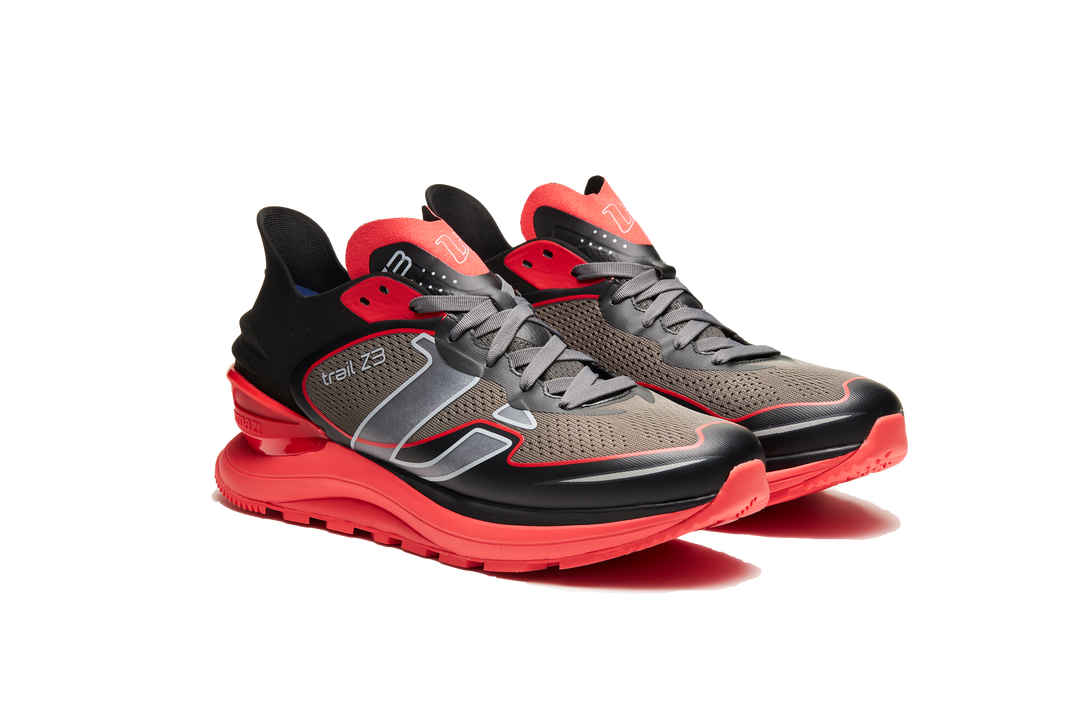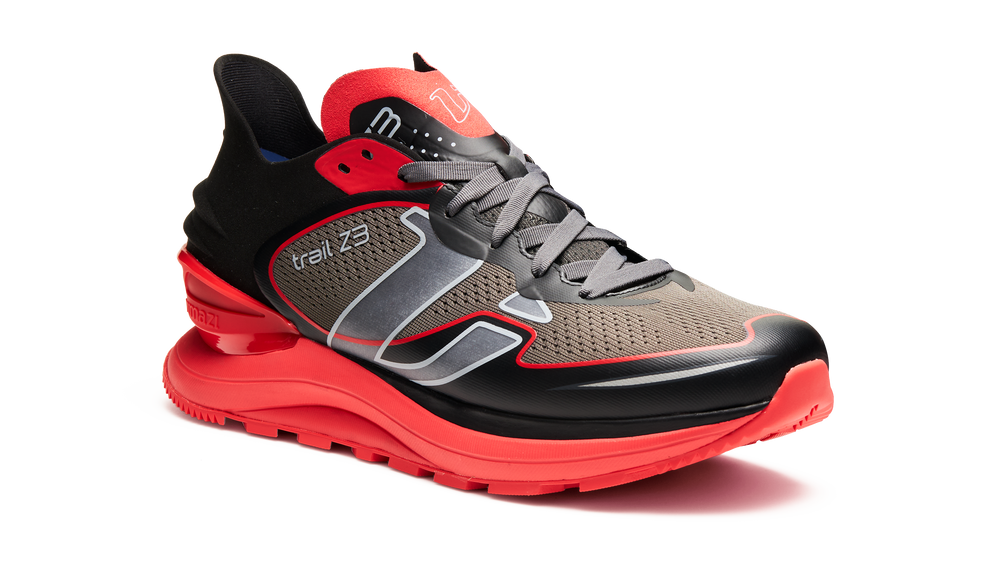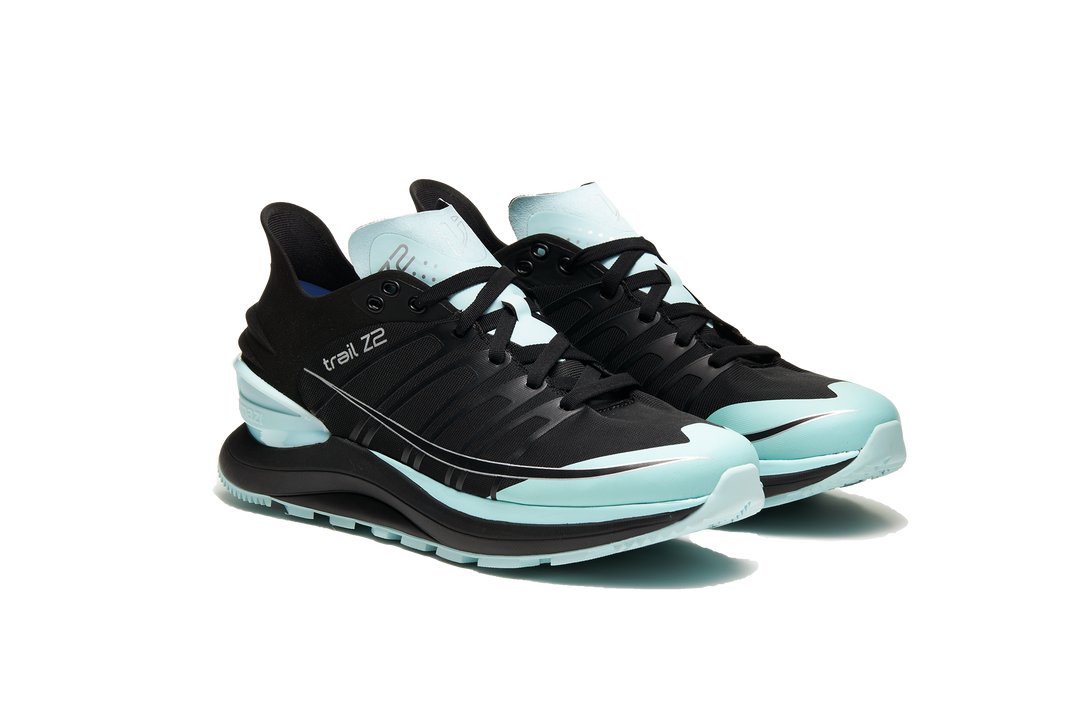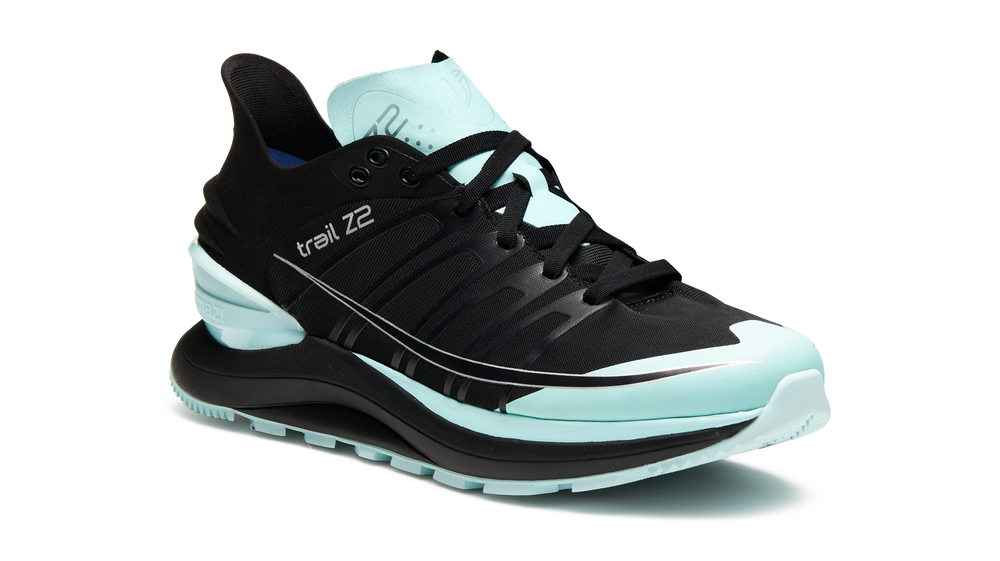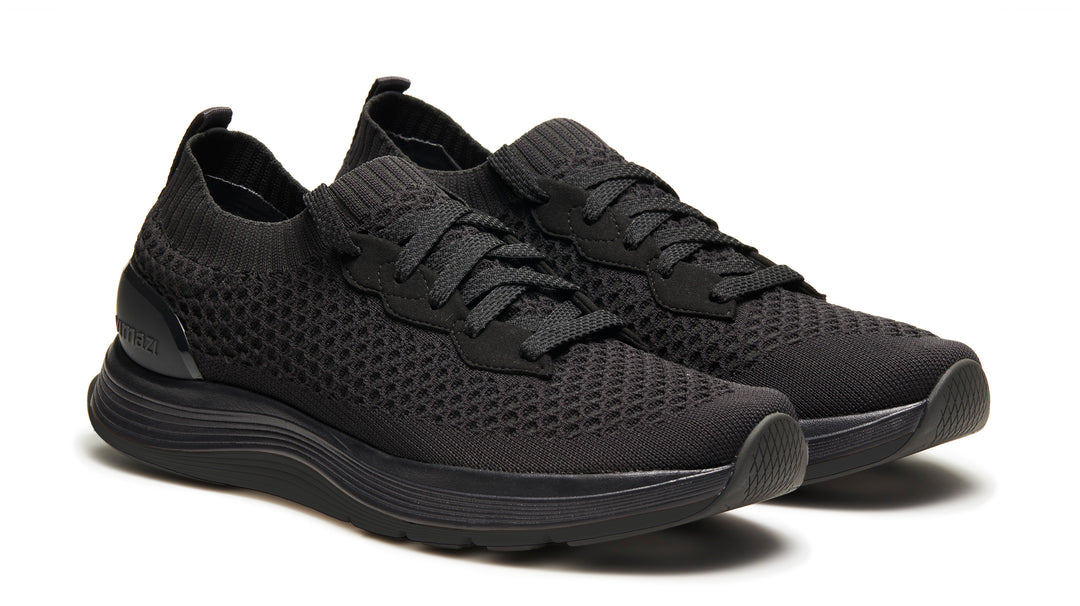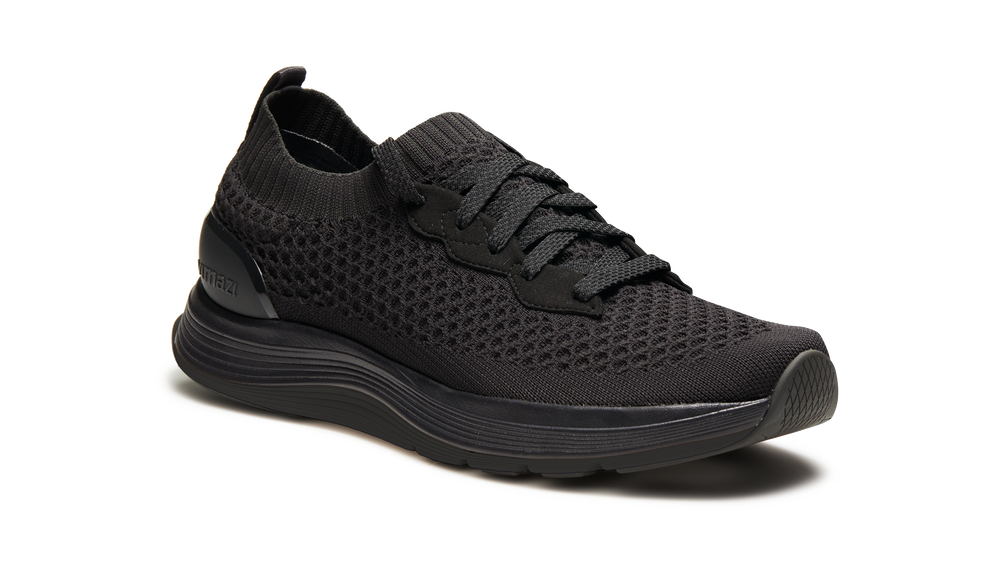The science behind our unique shoe calculator: Running
How does this work?
Sign up now to be the first in the UK to try this unique, for you, running shoe.
No more guess work or relying on Industry marketing, our calculator uses the laws of physics to let you select the best shoe for you. How can we do this?
When you run, you have a period of time when there is one foot on the ground (stance phase) and a period when neither foot is on the ground (flight or aerial phase). When you run faster, you spend longer in the air which requires you to lift higher from the ground to counteract gravity. As a result, you hit the ground with a greater force (impact force) - imagine a short jump compared to a long jump.
This changes with altered running speeds and therefore the material underneath your heel needs to change with different speeds.
In addition, the force you use to push off your stance leg (the leg that is in contact with the ground) also changes with the speed you run, and this force is actually greater than the impact force. As a result, in order for the shoe to be stable as you push to the next step, this material needs to be firmer than the material under the heel – they have two different roles.
As an example, imagine running on grass or sand of just the right consistency. You would rather land on the sand as it is more forgiving but push off from grass as it is firmer and more stable.
Both the traditional and the new super shoes cannot address this because the material in the sole (midsole) of the shoe is the same throughout, so it is either too firm for heel contact or too soft for push off.
The Vimazi shoes address this as they have a softer density material beneath the heel than the forefoot.
Importantly, each model has a different ratio of material because this changes based on the speed you run – it is all down to the laws of physics. So now, you can pace tune the shoe to you.
However, there are many factors that can also contribute to the forces under your feet including your gender, height, weight and foot strike pattern.
As a result, we have developed a calculator using the laws of physics to allow you to choose the best shoe you – rather like determining the best dose of a medication.
By using your gender, height, weight, cadence (steps per minute), speed and foot strike pattern (for runners), the math’s is done for you and you can choose the best shoe. Below are some examples. We have added slope and wind resistance for fun but these also effect the speed you walk or run and therefore the force beneath your feet.
So let’s see how speed, gender and foot strike change the force and potentially the shoe choice.
This is an example of someone with a heel strike running pattern:


This graph shows the vertical (up and down) impact force (heel strike - green line), the vertical push off force (propulsion – blue line) and the total force beneath the foot (black line) during a step. The lines beneath the graph represent the forces forwards and backwards)

However, the force of impact and propulsion are shared between the heel and forefoot (which is why we have different densities of material). This graph shows the force beneath the heel (blue line) and forefoot (red line) and the whole foot (black line). The calculator uses this data and recommends the Z50.
If we change the gender but leave all of the other features the same, the force / time graphs do not change much but the shoe choice is now a Z40 due to gender differences.
If we change the running speed to 8 min/km for a male runner:

The slower speed means the runner spends less time in the sir and thus, the forces are lower. The calculator recommends the Z70 in this instance. The actual shapes of the graphs do not change a lot, just the relative values.
Now, let’s change the foot strike to midfoot:

In this instance, the shape of the graphs do not change much. Although the force beneath the heel is less, the force beneath the forefoot at push off remains the same and therefore the shoe choice is the same: Z70.
If we change this to a forefoot strike pattern but keep the step length / cadence the same (this often changes but for the example we will leave them the same):


In this case, the forefoot contacts the ground before the heel and therefor the red line starts sooner and rises more quickly than the blue line (heel). Many forefoot strikers also get heel contact hence the shape of this graph.
Although this does change the forces, not significantly enough to change the shoe choice i.e. still the Z70.
Now these are artificially created examples but it shows how aspects of the way you run and your size and gender can effect the force under your feet and therefore the density of material you need beneath the heel and forefoot.
It is slightly different for walking as there is always one foot on the ground and the step length does not change impact force (unless you take very long steps). For walking, weight is a more important factor. A heavier person will compress the medial side of the forefoot part of the shoe proportionally more than a lighter person and therefore requires a different density of material.
Hopefully, this demonstrates why having a single density midsole does not optimize your walking or running. This can only be achieved by selecting the Vimazi model for you.
If you would like to have your running shoes selected based on the outlined calculation, please provide your details here.


